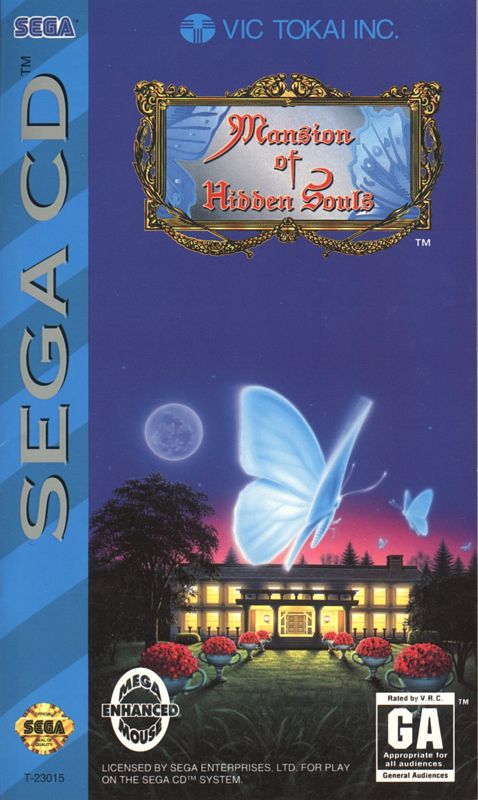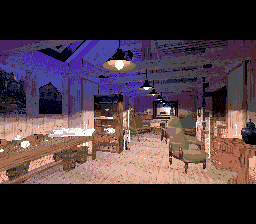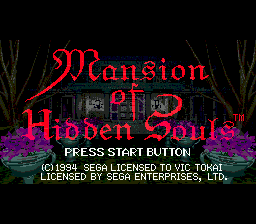Retro Replay Review
Gameplay
Mansion of Hidden Souls unfolds as a deliberate, puzzle-driven exploration where each hallway and chamber feels alive with mystery. You guide Jonathan through a series of interconnected rooms in a pre-rendered mansion, using simple point-and-click controls to investigate every corner. Rather than offering free-roaming movement, the game advances through carefully crafted full-motion video sequences that trigger when you discover clues or solve puzzles, lending a filmic quality to your actions.
The core gameplay loop revolves around deciphering visual riddles and collecting key items to unlock new areas. From locating oddly placed keys to interpreting cryptic symbols scrawled on ancient walls, the challenge always feels logical but never too obvious. Occasional environmental hazards—like hidden traps that close off exits—keep tension high and encourage backtracking once you’ve solved specific puzzles, extending the sense of exploration without ever becoming tedious.
One of the more memorable mechanics involves interacting with the mansion’s enigmatic, talking butterflies. These fluttering creatures sometimes offer helpful hints or cryptic warnings that can point you toward hidden passages or caution you against premature actions. While their appearances may initially feel whimsical, the butterflies’ guidance becomes invaluable as the mansion’s secrets grow darker, providing an unusual but welcome combination of narrative flavor and practical assistance.
Despite its reliance on FMV technology, Mansion of Hidden Souls avoids feeling static by blending pre-rendered environments with live-action video triggers. You’ll witness brief cutscenes of Jonathan’s reactions, his sister’s fleeting glimpses, or the sudden flutter of butterfly wings in a dim corridor. Each video transition is smooth and purposeful, reinforcing the link between your curiosity and the mansion’s unfolding story.
Graphics
Visually, Mansion of Hidden Souls is a showcase of mid-’90s FMV technology and pre-rendered artistry. The mansion’s interior is richly detailed: ornate wallpaper patterns, dusty wooden floorboards, and flickering candlelight all contribute to an immersive, albeit dated, gothic ambiance. Though resolution is far below modern standards, the game’s atmospheric lighting and carefully staged set pieces make effective use of contrast and shadow to heighten tension.
Full-motion video clips of Jonathan and his sister are filmed against green-screen backdrops, then composited into the pre-rendered rooms. While the actors’ performances sometimes feel theatrical—complete with dramatic reactions and occasional overacting—this style suits the game’s surreal tone. The butterflies, rendered as CGI overlays, occasionally float imperfectly but still manage to appear luminous and otherworldly against the dark hallways.
The mansion itself feels like a character, with each room sporting its own visual identity. A grand foyer with a sweeping staircase gives way to a dusty library lined with towering bookshelves, while secret laboratories hide behind sliding bookcases. Although textures are relatively low-res by today’s criteria, the designers’ clever use of perspective and detail creates convincing depth, making exploration feel rewarding even when you’re simply looping back through previously visited corridors.
Color grading is muted, favoring deep blues, sepia browns, and pale yellows that evoke an old, decaying estate. Occasional bursts of bright color—like the butterflies’ iridescent wings or a red ribbon fluttering in the breeze—stand out dramatically, guiding your eye to critical clues or simply offering a momentary visual reprieve from the gloom.
Story
At its heart, Mansion of Hidden Souls tells a story of sibling devotion and uncanny phenomena. You play as Jonathan, whose younger sister vanishes after stepping into the mansion’s threshold. The inciting incident is simple yet compelling: find your sister before the mansion’s malevolent forces claim her forever. From the first creak of the door, the narrative drips with foreboding, encouraging you to press onward despite the palpable danger.
The game introduces supernatural elements slowly and deliberately. Talking butterflies serve as both guides and omens, their cryptic remarks hinting at past tragedies within the mansion’s walls. As you gather notes, diaries, and mysterious artifacts, fragments of backstory emerge: stories of previous occupants, occult experiments, and a mounting sense that the mansion is alive in more ways than one. These revelations are paced across several hour-long play sessions, ensuring that curiosity and tension build steadily.
Dialogue is delivered through FMV inserts, capturing raw emotional beats as Jonathan reacts to each new discovery. His sister’s fleeting appearances—sometimes invisible, sometimes caught on camera—add a bittersweet urgency. You sense her presence without truly seeing her, fueling the emotional core of the adventure. While character development is minimal by modern standards, the sparse storytelling leaves room for your own imagination to fill in the gaps, making each revelation feel personal.
Ultimately, the narrative payoff relies on how invested you become in Jonathan’s quest. Endings vary slightly based on your thoroughness in uncovering hidden objects and clues, offering a small degree of replay value. Though the storyline may not rival blockbuster adventure epics, its eerie charm and steady unveilings of the mansion’s dark legacy deliver a memorable, if succinct, haunted-house experience.
Overall Experience
Mansion of Hidden Souls stands as a fascinating artifact of its era, blending live-action video with point-and-click puzzle design in a way few games dared at the time. Its deliberate pacing may feel slow to players accustomed to fast-moving titles, but fans of atmospheric horror and thoughtful puzzle solving will find plenty to admire. The mansion’s haunting ambiance, coupled with the curious presence of talking butterflies, makes for an experience that lingers in memory long after you close the disc tray.
Accessibility is straightforward: intuitive point-and-click navigation, a simple inventory system, and automatically triggered video sequences mean you can focus on deduction rather than complex controls. However, the lack of in-game hints or a map can lead to moments of frustration if you become stuck, especially in the mansion’s more labyrinthine wings. A patient mindset and attention to detail are key to fully enjoying what this title has to offer.
As a piece of gaming history, Mansion of Hidden Souls is both a novelty and a genuine adventure. It may not boast cutting-edge graphics or sprawling open worlds, but its sense of isolation and creeping dread is remarkably effective. If you’re intrigued by interactive FMV, enjoy piecing together narrative breadcrumbs, and appreciate a slower, more methodical style of play, this mansion’s doors are open—and its secrets await.
For modern players, it’s worth experiencing the game through a re-release or emulated setup that enhances video clarity. The core design remains engaging, and the mansion’s mysteries still hold up as a testament to creative ambition in the early days of CD-ROM gaming. Whether you’re a collector of retro adventures or simply seeking an offbeat horror puzzle game, Mansion of Hidden Souls offers a uniquely eerie journey worth undertaking.
 Retro Replay Retro Replay gaming reviews, news, emulation, geek stuff and more!
Retro Replay Retro Replay gaming reviews, news, emulation, geek stuff and more!









Reviews
There are no reviews yet.